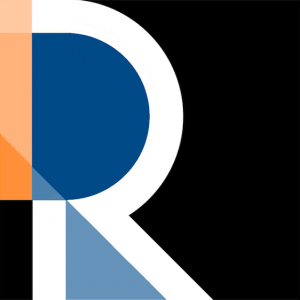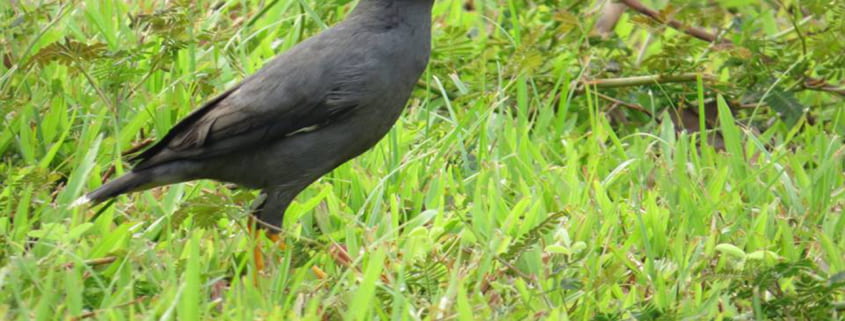2019 10 Ideas Submission – Bird Safe Certification
Memo proposal submitted to the Roosevelt 10 Ideas Journal. Written by the Energy, Technology and Environment Policy Centre, Roosevelt Institute @ Yale-NUS College.
Bird Safe Certification: Addressing Avian Mortality and Biodiversity Loss in Urbanized Singapore
Bird mortality in Singapore is largely due to reflective windows and night lighting in high-rises. The Singaporean government should launch a campaign to inform residents of the importance of Singapore’s birds and create an incentives scheme to encourage bird-safe measures in construction and management.
Background & Analysis
Singapore’s rapid urbanization has created a life-threatening urban environment for birds. The proximity of reflective surfaces to bird habitats and migratory entrance points, as well as bright lights in buildings at night, pose a serious threat to the island’s avian biodiversity. In the past five years alone, at least 700 birds have been found dead as a result of bird-building collisions. Such collisions are particularly prevalent in the areas surrounding the two largest nature reserves and the Central Business District (CBD). Large reflective surfaces on low-rise buildings near reserves and the West coast – where migratory populations enter Singapore – confuse birds who perceive the reflection as a continuation of the nearby natural environment. Furthermore, nocturnally migrating birds follow points of light in times of low visibility, leading them to collide at high migration-speeds with high-rise buildings in the CBD.
Singapore is home to a diverse number of bird species and hosts many more as a stopover for migratory birds on the East-Asian Australasian Flyway. Of these many species, the country hosts 16 globally threatened and 30 near-threatened avian species. Singapore is also a refuge for many regional birds which have been extirpated from other countries in Southeast Asia due to illegal hunting and habitat destruction. Biodiversity in Singapore will be near impossible to restore once lost, and this issue, if left unaddressed, will result in negative ramifications on local and global environments and ecology, as well as the national heritage of Singapore.
Talking Points
- In the past five years alone, at least 700 birds have been found dead as a result of bird-building collisions in Singapore.
- Singapore hosts more than 400 avian species, including both resident and migratory birds and about 2,000 arctic migratory birds, many of whom are rare or endangered, make winter stopovers in Singapore’s Sungei Buloh Wetland Reserve each year.
- Due to illegal hunting and natural habitat destruction in other Southeast Asian countries, Singapore is a refuge for many rare regional species, including the Straw-headed Bulbul.
- Birds and avian biodiversity are integral to the local ecosystem as well as to Singapore’s natural heritage which should be conserved for future generations.
The Policy Idea
We propose a two-part solution, which includes both a public campaign by the National Parks Board to inform residents of the environmental and cultural importance of Singapore’s bird populations, as well as the creation of a Bird-Safe Certification (BSC) scheme to encourage bird-safe principles in building construction and management, administered by the Building and Construction Authority. The campaign will strengthen public perceived value of bird-safe buildings, thus leading BSC buildings to have improved corporate image and greater leasing and resale value of buildings, and incentivizing developers to build bird-safe buildings.
Policy Analysis
This two-part approach of a public campaign and the Bird Safe Certification (BSC) scheme is the best solution to bird mortality caused by the Singaporean urban environment. The BSC will directly reduce bird mortality by incentivizing building developers and managers to implement measures which are shown to decrease bird collisions in Singapore and abroad, while the public campaign will strengthen the value of BSC through public opinion.
Although there may be concern that BCS is not enough motivation for developers and managers to implement bird-safe measures, this is not the case. This is supported by the success of the similar existing Green Mark certification, which has certified nearly 2,000 buildings since its launch in 2009. In the case of BCS, measures rewarded by the scheme are relatively low cost, while the benefits – improved corporate image and greater leasing and resale value – will be significant. Some examples of low-cost BSC measures include the pasting of matte or opaque decals on low-rise windows, and night lights-out policies in high-rise buildings. Furthermore, the proposed public campaign will also strengthen the publicly perceived value of Bird Safe Certified buildings and the benefits to BSC building owners and managers. Furthermore, the efficacy of the government-run campaign is supported by the legacy of similar campaigns as key Singaporean governance tools which have a significant impact on Singaporean views and behavior. This solution brings together the public, the government, and building developers and managers to improve the safety of the urban environment to Singapore’s birds.
Next Steps
Policymakers will likely be open to our solutions since biodiversity conservation is a focus of the Singaporean government. Ultimately, the Building and Construction Authority (BCA) and the National Parks Board (NParks) must be on board with these solutions. Since they are government bodies housed within the Ministry of National Development (MND), it would be beneficial to first reach out to the Ministry. To do this, we will collaborate with the Nature Society (Singapore) which has researched bird-building collision mortality and established connections with NParks and the MND. We will also work with allies in the government, such as Louis Ng, a Member of Parliament who focuses on animal rights and environmental issues. To more specifically identify the mitigation measures to include in the Bird-Safe Certification, we will also work researchers at the National University of Singapore who are already researching this issue.
Key Facts
- Between 1998 and 2016, there were at least 237 recorded bird-building collisions in Singapore, with around 157 of these collisions resulting in bird fatalities.
- About 73% of Singapore’s bird-building collisions take place in the central and western parts of Singapore – which include the high rises of the central business district, heavy industrial areas, and areas surrounding large green spaces which are bird habitats.
- A reduction in reflected vegetation by way of a 10% decrease in the height of greeneries leads to at least a 30% decrease in the risk of bird-building strikes.
Action Plan Snapshot
This proposal requires the support and initiative of the Building and Construction Authority (BCA) and the National Parks Board (NParks), two Singaporean national government bodies housed within the Ministry of National Development (MND). Thus, it will be beneficial to establish a relationship with not only with the BCA and NParks, but also the Ministry of National Development in order for coordination of the solution.
To build agency and a coalition, we will meet with the Nature Society (Singapore) (NSS) and the NSS Bird Group (BG). We will interview them to learn about their experience affecting environmental policy change and get their advice. We will also inquire about their own research regarding avian mortality due to bird-building collisions in Singapore. We will also reach out to researchers at the National University of Singapore who are already researching this issue. We will work with them on identifying the best architectural design and management process to mitigate avian mortality resulting from bird-building collisions, as well as drafting a comprehensive list of qualifications for the Bird Safe Certification (BSC) to propose to the Building and Construction Authority.
To build political power, we will meet with Louis Ng, a Member of Parliament who works on legislation specifically addressing animal rights and wellbeing, as well as environmental policy and regulations. Through him, we will pose Parliamentary Questions to the Ministry of National Development asking how the ministry views the role of avian biodiversity in Singapore and what measures the ministry is currently taking to protect this biodiversity. With his assistance, we will also aim to directly make contact with NParks and BCA to begin building a relationship of collaboration.
In order to gain public support for our policy solutions and to put pressure on the MND, we will also run a social media campaign. This October, a Jambu Fruit Dove died after a collision and his image was shared on Facebook, receiving more than 6,000 reactions, shares, and comments, with many calling upon government and ministers to enact measures to prevent such future occurrences. This campaign will mobilize this public concern through a Facebook social media campaign which will both spread awareness of the issue as well as call upon citizens to lobby their own Members of Parliament. The campaign focus on Singapore’s many endangered species and the frequency in which they die due to collisions.
Image Credit: Lim Kim Seng

 https://www.straitstimes.com/singapore/environment/in-pictures-10-most-common-birds-in-singapore
https://www.straitstimes.com/singapore/environment/in-pictures-10-most-common-birds-in-singapore
 Ong Ye Kung
Ong Ye Kung
Leave a Reply
Want to join the discussion?Feel free to contribute!